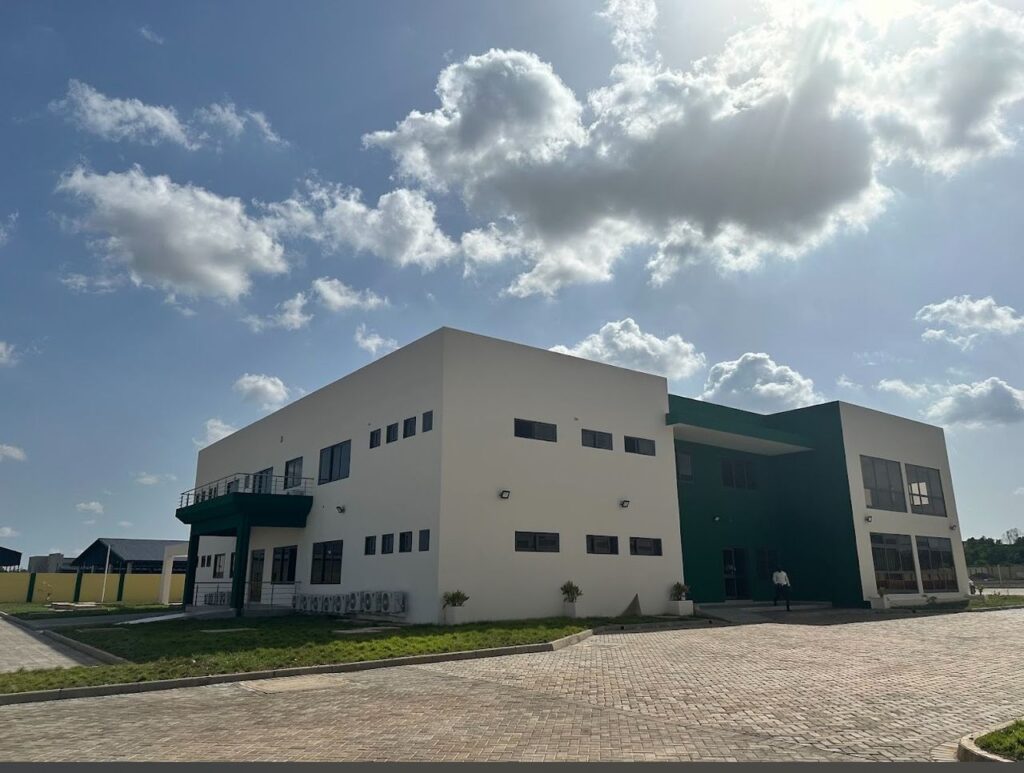In Accra, near the 37 Military Hospital and opposite the MaxMart shopping centre, a patch of prime real estate which once housed the Greater Accra Regional Office of the Driver and Vehicle Licensing Authority (DVLA) is at the centre of controversy.
An ambitious initiative called “Energy City”, proposed by the Ghana National Petroleum Corporation (GNPC), promised to transform the area into a modern energy hub.
But the project devolved into a series of setbacks, including stalled progress and accusations of improper land sales.
The Energy City concept was envisioned as a strategic redevelopment of a key enclave in Accra.
According to government statements at the time, the project aimed to create a dedicated zone for energy-related industries, potentially including offices for petroleum companies, renewable energy firms, and supporting infrastructure.
The area around the old DVLA office — encompassing lands near Kotoka International Airport and military installations — was targeted for compulsory acquisition to make way for this vision.
But as of August 2025, the Energy City project remains unfinished and behind schedule.
Demolitions began around 2023 with structures in the 37 area, including police accommodations and parts of the DVLA site.

The DVLA was compelled to relocate its operations to a new site at Bohye near Haatso in April 2024, a move that officials initially framed as temporary to facilitate the project.
A new office complex was constructed for its continued operations, but recent revelations have cast doubt on the entire process by which the Authority was relocated.
Initial Pushback from Government

In 2016, Ghana’s Parliament initially blocked GNPC from getting approval for its Energy City project due to a report from the Mines and Energy Committee on the project.
The ranking member of the Mines and Energy Committee at the time, K. T. Hammond, argued that GNPC had veered off its core mandate in its initial proposal for the project.
“The way the GNPC has been spending the nation’s money is uncalled for,” he stated.
“On the matter of the head office, it came up about three years ago that they want to have a new head office because the old one was dilapidated. Why then do they want to go to Energy City when some funds had already been committed in the designs they brought before Parliament?” he argued.
GNPC was later approved for funding in 2017.
But in 2019, the entity sought parliamentary approval from Ghana’s parliament for the allocation of funds, including $20 million for its head office in the proposed Energy City location.
Relocation of DVLA and Its Aftermath
The DVLA’s move to Haatso-Bohye was not without hiccups.
Julius Neequaye Kotey, the DVLA’s chief executive, has publicly lamented the site’s inefficiencies, noting that it impacts revenue collection and service delivery.
More alarmingly, Mr. Kotey revealed that the property is not owned by the DVLA but leased from a private developer, Unique Development Groups, adding an ongoing financial burden to the authority.

At a press briefing, Mr Neequaye stated that the land given for the Energy City project should be returned to the DVLA.
“This land still belongs to DVLA. If the Energy City project failed, the land should have been returned to us — not sold off,” Mr Neequaye argued.
In the same briefing, DVLA Board Chairman George Spencer Quaye accused the previous government of breaching public trust by selling off the land without fulfilling the Energy City mandate.
“We were relocated from this property for a national project, but as we speak, there is no Energy City here,” he stated.
According to Mr Quaye, part of the site is now occupied by a Swiss-owned company, which uses it as a vehicle warehouse. He alleges other sections have been sold, fetching prices as high as $3 million per acre.
He announced plans to petition the Attorney General, the Office of the Special Prosecutor, and the National Security Secretariat to investigate and reclaim the land.
No timeline was given for when DVLA would present the petition.





